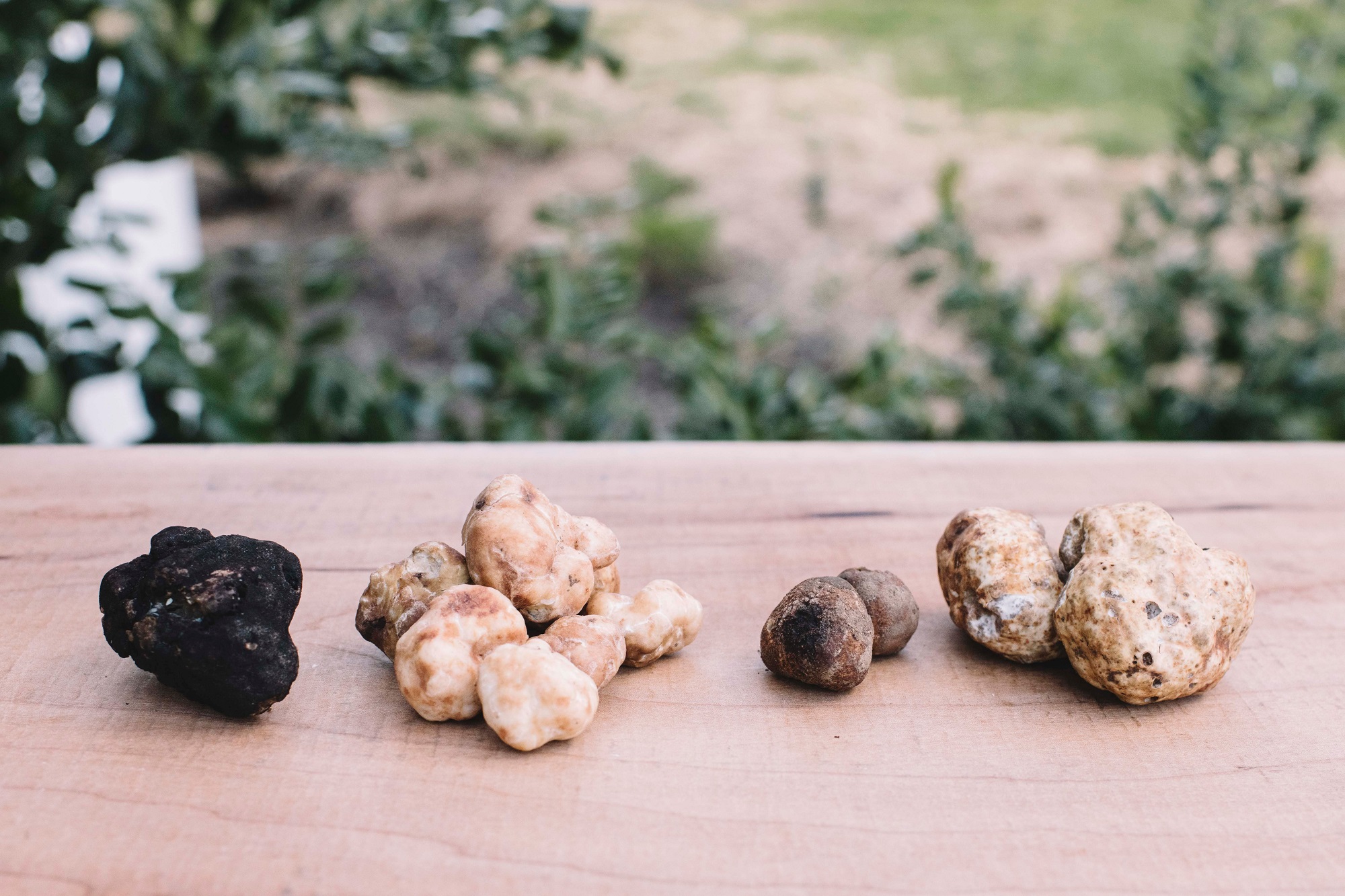While it’s always tempting to jet off to Piedmont to sample fresh, tasty truffles, you only need to get to Oregon to try some of the world’s most delicious fungi. The Pacific Northwest state has four native species, all found primarily in the celebrated Willamette Valley wine region. While this region is best known for Pinot Noir, the terroir is equally suited for truffles, and the state has quickly earned a reputation among cooks and gourmands alike as one of the best spots to seek out–and sample–the elusive fungus. Oregon even has its own annual truffle event, the Oregon Truffle Festival, complete with a truffle-foraging competition specifically for amateur dogs (i.e., local pets who do not forage commercially).
To learn more about Oregon truffles, we spoke to the person who knows them best: Dr. Charles Lefevre, Oregon’s foremost truffle evangelist and co-founder of the Oregon Truffle Festival. We also chatted with Willamette Valley Vineyards Chef DJ MacIntyre, a culinary wizard apt at both creating truffle-based concoctions and pairing different types of truffle with wine. Here’s what we learned.
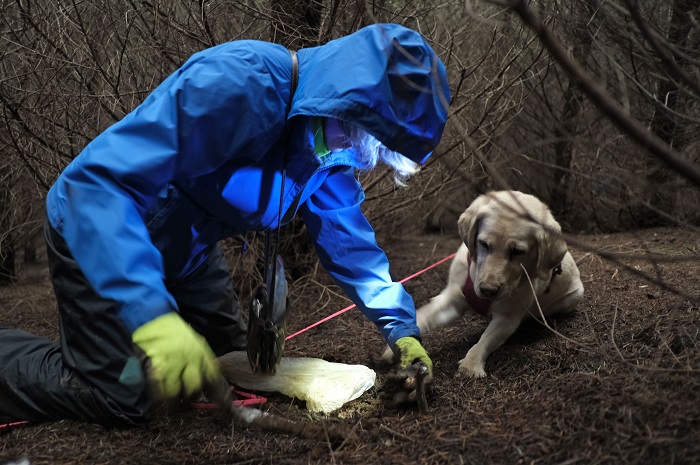
What are Oregon Truffles and why are they so special?
There are four native species of truffles in Oregon: the Oregon Black Truffle, the Oregon Brown Truffle, the Oregon Winter White, and the Oregon Spring White. France’s beloved Périgord Truffle is also cultivated in the state, usually in inoculated orchards, and as with many Old-World grape varietals, the Oregon terroir suits them well.
“Truffles in the broad sense are nearly ubiquitous,” says Dr. Lefevre, who also holds a Ph.D. in Forest Mycology from Oregon State University. “And there are truffles with notable culinary qualities throughout the temperate zones of the Northern Hemisphere. It is true, though, that the best truffles are concentrated in just a few regions—think Provence, Tuscany, Piemonte, Istria—and Oregon is definitely on that short list, both for the quality and diversity of its native truffles, and the success that growers in Oregon are having with the cultivation of European truffles in orchards of inoculated trees.”
But what about native truffles?
“The answer to why Oregon has so much truffle diversity and abundance boils down to luck,” Lefevre says. “Oregon happens to be at a confluence of suitable climate, suitable soils, and suitable host trees. It also happens that most ‘culinary’ truffles thrive at the margins of human habitat, which, in Oregon, were created millennia ago and maintained ever since by the Indigenous people of the region. By burning annually, the Indigenous people maintained fertile prairies that produced the foods that sustained them. Those fertile prairies were the destination of the Oregon Trail, and they are exactly the kinds of places where truffles thrive.”
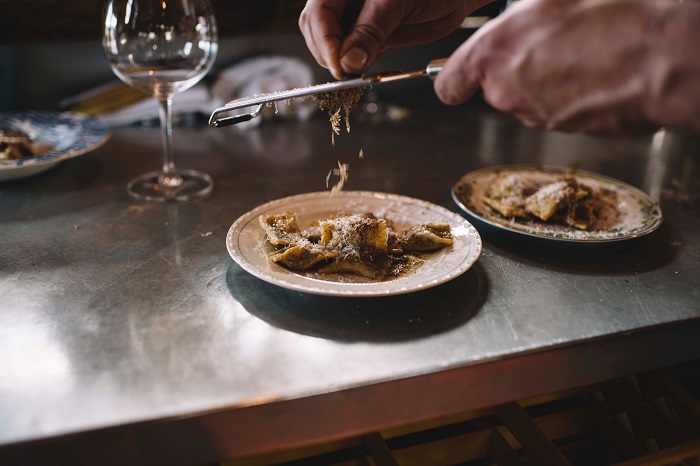
What dishes work best with Oregon truffles?
While (artificial) truffle flavoring has been making an appearance in everything from olive oil to French fry seasoning in the past couple of decades, few people have experience cooking with real, fresh truffles. This is largely due to the fact that once harvested, truffles don’t keep long. Fortunately for Oregon chefs (and diners), there’s an abundance of local truffles available throughout much of the year. In many of the state’s finer restaurants, truffles make frequent appearances in everything from savory pasta dishes to—in the case of Oregon Black Truffles—chocolate mousse.
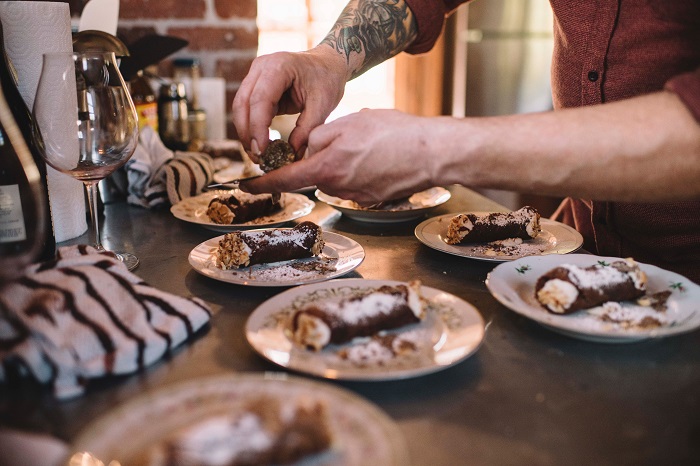
“Most truffles are all about aroma—and their aromas are enthralling,” says Lefevre. “But a few truffles, like the Oregon whites, also come through clearly on the palate in addition to the nose,” he continues. “[They] add electricity to food. It isn’t exactly a taste: it’s a magic that takes place somewhere deeper—behind and above your mouth.” Chef MacIntyre suggests pairing these magical whites with savory ingredients. “When ripe, they have an earthy, garlicky, cheesy aroma, so they pair easily with pastas, meats, eggs, almost anything that contains fats or oils,” he says. His suggested dish? “Goat cheese- and beet-stuffed pelmenis with a truffle-infused cream sauce and hazelnuts.”
“Oregon Browns—when I can find them—remind me of sautéed porcini mushrooms,” he continues. “So I like them over a warm bagna càuda [a hot garlic-and anchovy dip originally from Italy’s truffle-rich Piedmont region] or sliced thinly over warm bread and butter with just a touch of sea salt.” If you’re thinking about integrating versatile Oregon truffles into your own recipes, Macintyre offers a bit of advice: “Truffles are best when you let them do the talking. Keep it simple.”
What wines pair best with Oregon truffles?
MacIntyre suggests pairing brown truffle concoctions with a brightly acidic, fruity, and floral Chardonnay, but when it comes to Oregon’s black and white truffles, the state’s beloved Pinot Noir has his heart. “They both grow in the same terroir, so it makes sense that they carry the subtle flavors of the earth into their taste profiles,” he says. Think “red fruits notes with baked spices, minerality, cedar, and tannins paired with earthy, funky, cheesy-garlicky mushrooms that grow underground.”
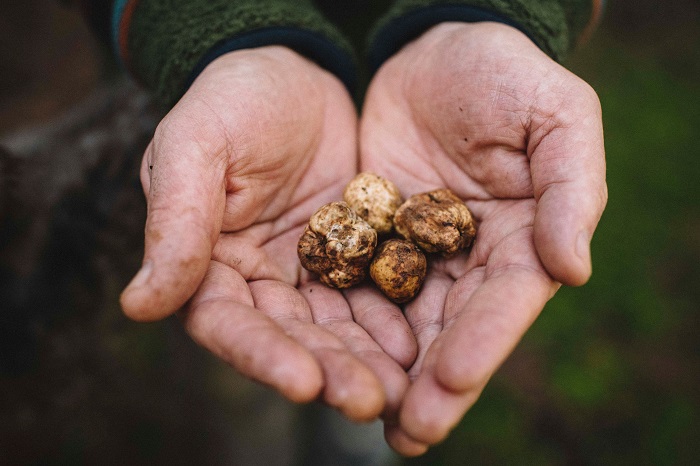
Where can I get Oregon truffles and how can I keep them fresh?
While bringing fresh truffles back from Europe can get you into trouble with Customs, you’ll face considerably fewer hurdles in getting fresh Oregon truffles into your kitchen. One of the nice things about having such a diversity of truffles available in the United States is that you can easily procure them, either by mail order or by heading out to Oregon yourself—just be prepared to spend roughly $600 to $800/lb. for dog-harvested truffles. If you’re especially ambitious, you can even teach your pet dog how to hunt truffles. The easiest way to do this is by signing up for the Truffle Dog Training Seminar held at the Oregon Truffle Festival.
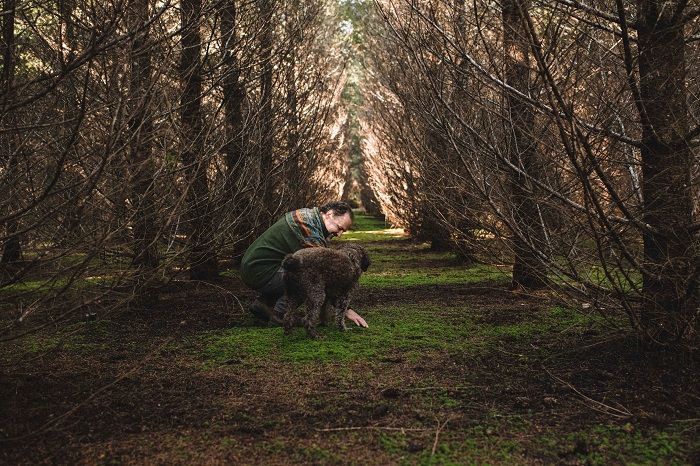
While procuring truffles is relatively easy for U.S. residents, things start to get tricky when it comes to storing them. Most experts recommend keeping truffles wrapped in a paper towel or stored single-layer in a Tupperware box lined with paper towels and then kept in the fridge—MacIntyre suggests keeping them at around 40°F. To make the most of your truffles, consider storing them near eggs, butter, cheese, or cream. As truffle aroma is fat-soluble, it will naturally infuse itself into your dairy products.
Just don’t be surprised if once you’ve started cooking with truffles, you won’t be able to stop. While truffles aren’t physically addicting, research has shown that they contain anandamide, which can trigger an almost buzz-like effect in creatures with endocannabinoid systems—including dogs, pigs, and humans. This may be one of the ways that truffles keep their species alive. Unlike mushrooms, which can send their spores out to new lands on gusts of wind, truffles use their enchanting scent to allure creatures to dig them up and eat them, consequentially spreading their spores around. “The one thing that all truffles have in common is that they’re magical,” says Lefevre. “Their intention is to manipulate you into eating them—and they’re good at it.”
Featured photo by Easton Richmond.
You are reading “Oregon Truffles: Everything You Need To Know” Back To Top
are there truffles in Oregon? Oregon white truffle, truffle hunting Oregon: outdoorsy food and wine experiences
If you enjoyed this guide, make sure you register to become a Winetraveler for free! You’ll get access to all of our content and interact with other Winetravelers and for travel inspiration around the world. Be sure to follow along with us on Instagram as we continue to feature more exciting destinations.
